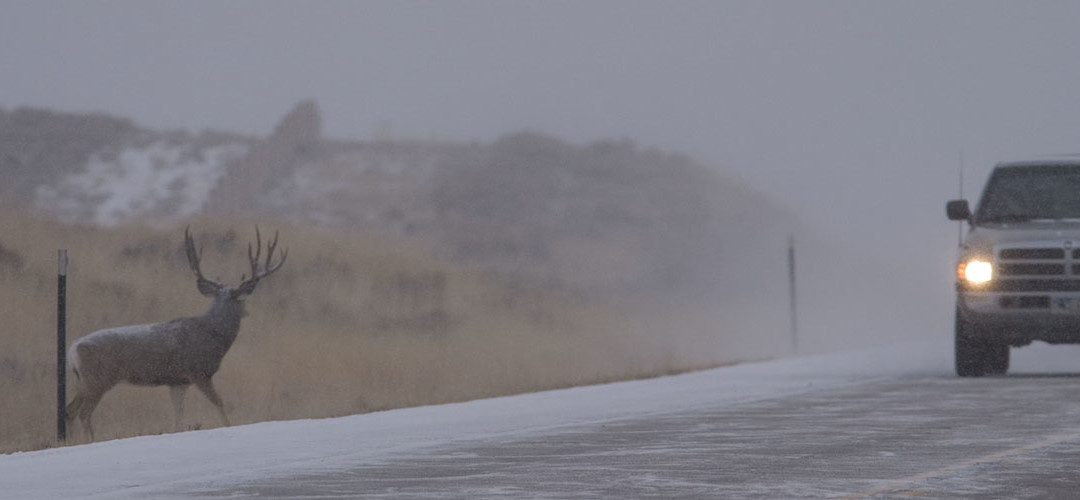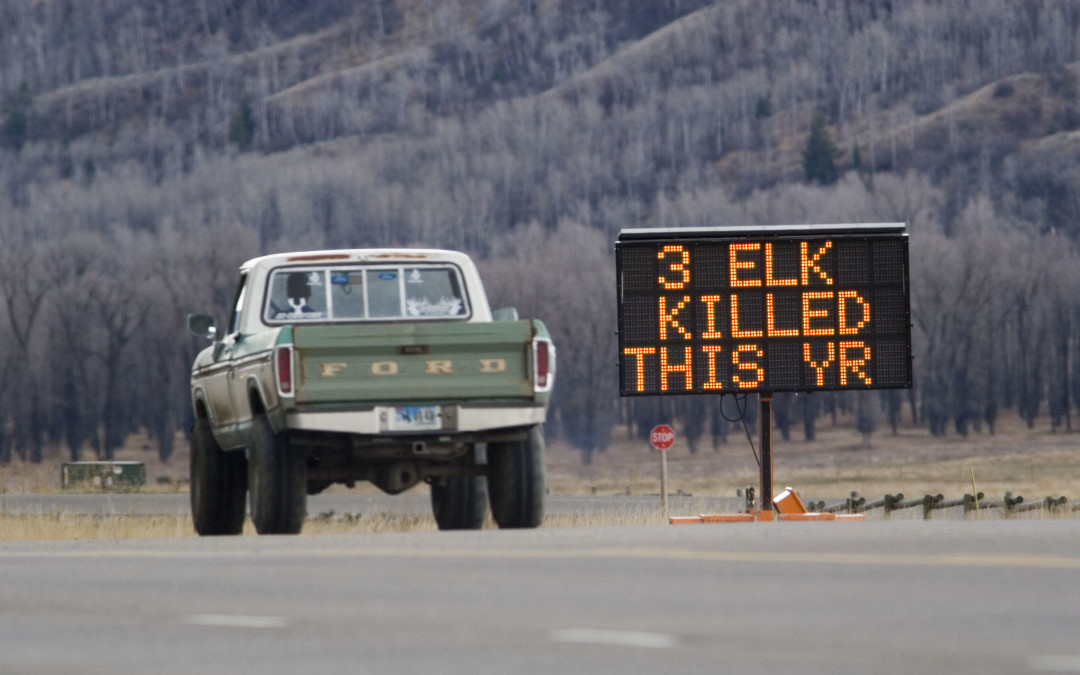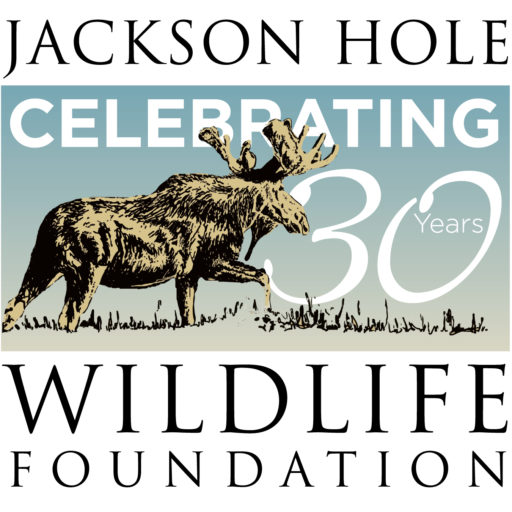
by jhwildlife | Feb 10, 2016
In Teton County, accidents between vehicles and wildlife kill hundreds of animals each year including moose, elk, deer, bison, wolves, pronghorn, bear, and uncounted numbers of small animals and birds. These accidents are also costly to people – with over $2 million a year in expenses for car repairs, personal injuries, disability, and death. You can help yourself and wildlife in Teton County to avoid accidents by following a few simple rules:
1. Be alert and drive for the conditions. Most accidents happen at times of low visibility – dawn, dusk, night time or in bad weather.
2. Watch for our electronic warning signs. These signs are put in places where we know animals are or have recently been crossing the road. They’re not just generic warnings – when you see these signs, watch carefully for wildlife.
3. When you see wildlife – Slow Down. If you see one animal cross the road, it is very likely more are close behind. Animals near the road are not waiting for us to pass by – expect them to do something unexpected, like dash in front of your car.
4. In winter, wildlife often use roads to move about – it’s easier than walking through deep snow. But, sometimes they get onto a road and can’t find a quick place to get off. Give them a brake. Be patient and give them time to find a place to get off the road.
5. To protect yourself and your passengers, experts advise that you should not swerve off the road to avoid hitting an animal.
Remember, the opportunity to see wildlife is one of the special gifts of living in Jackson Hole. Let’s all “Drive for Wildlife” to make sure we get to keep seeing them now and into the future.

by jhwildlife | Feb 9, 2016
Roads, People, & Wildlife: There’s Too Much to Lose
Although a necessity for travel in the 21st century, roads create significant obstacles to wildlife movement and fragment important wildlife habitat. As our local and tourist populations grow, we see significant increases in traffic, perpetuating the need to add more lanes and roads to our local transportation system. Unless we implement more effective mitigation measures, the rate of wildlife-vehicle collisions will steadily increase as animals are faced with wider, busier roads. Our records indicate an average of 194 deer, elk, and moose are killed on highways in Teton County each year, a number that is projected to exceed 500 by 2020.
These accidents usually cause significant damage to vehicles, threaten human safety, and sometimes result in human fatalities. In economic terms, wildlife-vehicle collisions in Teton County cost over $1.2 million each year
Data Analysis
After compiling wildlife-vehicle collision data from several sources and analyzing it spatially, researchers identified 22 ungulate (deer, moose, and elk) and 3 large carnivore (black bear, wolves, and mountain lion) hotspots, or specific locations where roads significantly impeded wildlife movement and resulted in large numbers of collisions. GIS specialists conducted a habitat connectivity analysis to identify potential high quality movement corridors for ungulates and large carnivores across roads in Teton County. This was critical for prioritizing mitigation based on the current condition and long-term viability of movement corridors.
Mitigation
The study also provides a thorough review of innovative techniques used around the world for mitigating the impacts of roads on wildlife. There are three general categories of mitigation: modification of driver behavior, restriction of wildlife access to roadways, and wildlife crossing structures. Often, the most effective and cost-efficient options included combinations of mitigation measures. After assessing effectiveness, cost, and constraints associated with each mitigation measure, we recommended potentially viable mitigation options for wildlife-vehicle collision hotspots in Teton County. Since Teton County is undergoing major road reconstruction, now may be the most cost-efficient time to build crossing structures at appropriate wildlife-vehicle collision hotspots.
Summary
The Roadway and Wildlife Crossing Study provides the essential tools to make Teton County’s transportation system compatible with wildlife. It pinpoints locations where human and wildlife traffic converges and recommends effective mitigation options for specific stretches of road. However, it is ultimately up to the road engineers, county officials, and the public to use the information in this study to make informed choices concerning roadway development in Teton County.
Download the Jackson Hole Roadway and Crossing Study, Teton County, Wyoming



